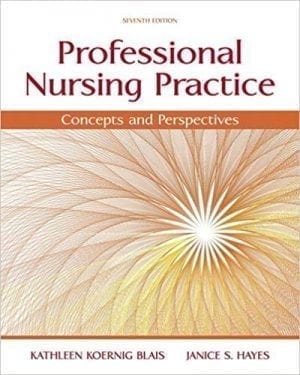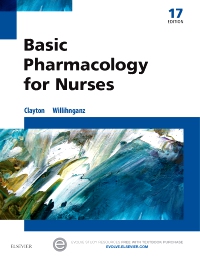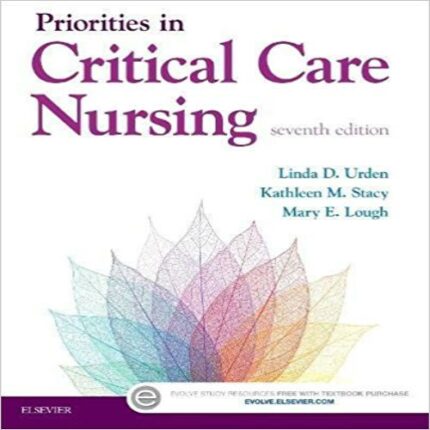Touhy & Jett: Ebersole and Hess’ Gerontological Nursing & Healthy Aging, 5th Edition
MULTIPLE CHOICE
1. A man is terminally ill with end-stage prostate cancer. Which is the best statement about this man’s wellness?
| a. | Wellness can only be achieved with aggressive medical interventions. |
| b. | Wellness is not a real option for this client because he is terminally ill. |
| c. | Wellness is defined as the absence of disease. |
| d. | Nursing interventions can help empower a client to achieve a higher level of wellness. |
ANS: D
Nursing interventions can help empower a client to achieve a higher level of wellness; a nurse can foster wellness in his or her clients. Wellness is defined by the individual and is multidimensional. It is not just the absence of disease. A wellness perspective is based on the belief that every person has an optimal level of health independent of his or her situation or functional level. Even in the presence of chronic illness or while dying, a movement toward wellness is possible if emphasis of care is placed on the promotion of well-being in a supportive environment.
PTS: 1 DIF: Apply REF: p. 7 TOP: Nursing Process: Diagnosis
MSC: Health Promotion and Maintenance
2. In differentiating between health and wellness in health care, which of the following statements is true?
| a. | Health is a broad term encompassing attitudes and behaviors. |
| b. | The concept of illness prevention was never considered by previous generations. |
| c. | Wellness and self-actualization develop through learning and growth. |
| d. | Wellness is impossible when one’s health is compromised. |
ANS: A
Health is a broad term that encompasses attitudes and behaviors; holistically, health includes wellness, which involves one’s whole being. The concept of illness prevention was never considered by previous generations; throughout history, basic self-care requirements have been recognized. Wellness and self-actualization develop through learning and growth—as basic needs are met, higher level needs can be satisfied in turn, with ever-deepening richness to life. Wellness is possible when one’s health is compromised—even with chronic illness, with multiple disabilities, or in dying, movement toward a higher level of wellness is possible.
PTS: 1 DIF: Understand REF: p. 7 TOP: Nursing Process: Evaluation
MSC: Health Promotion and Maintenance
3. Which racial or ethnic group has the highest life expectancy in the United States?
| a. | Native Americans |
| b. | African Americans |
| c. | Hispanic Americans |
| d. | Asian and Pacific Island Americans |
ANS: C
As shown in Figure 1.4, Hispanic men and women have the highest life expectancy of all. In 2011, for those of Hispanic origin of any race, the overall life expectancy at 65 years of age was 20.7 more years in 2011 (19.1 years for men and 21.8 years for women).
PTS: 1 DIF: Understand REF: p. 6
TOP: Nursing Process: Assessment MSC: Safe, Effective Care Environment
4. Historical influences that have shaped the lives of the majority of the in-between cohort in the United States today include which of the following?
| a. | Influenza epidemic of 1918 |
| b. | World War I |
| c. | Child rearing in the Depression |
| d. | World War II |
ANS: D
Those who are in the in-between cohort in 2016 were born between 1915 and 1945. The men were likely to have fought in World War II. The last of the Holocaust survivors are in this group. A person who survived the influenza epidemic would be at least 98 years old in 2016 and therefore would be considered old-old or a centenarian. Most of those who are of the in-between cohort had not reached childbearing age by the end of the Depression. Individuals in the in-between cohort would not have been old enough to fight in World War II.
PTS: 1 DIF: Understand REF: p. 5
TOP: Nursing Process: Assessment MSC: Safe, Effective Care Environment
5. According to researchers, which characteristic do most centenarians share?
| a. | Female |
| b. | Hispanic |
| c. | Living in rural areas |
| d. | Located in the Midwestern states |
ANS: A
Based on the U.S. census report of 2010, centenarians were overwhelmingly white, female, and living in the urban areas of the Southern states.
PTS: 1 DIF: Remember REF: p. 5
TOP: Nursing Process: Assessment MSC: Safe, Effective Care Environment
6. Which nursing intervention is a holistic approach to an older adult?
| a. | Performs glucose testing during the weekly worship service |
| b. | Wheels ambulatory adults to exercise when running late |
| c. | Assigns female nurses to older women who are Islamic |
| d. | Allows older adults in a nursing home to eat meals alone |
ANS: C
The nurse uses a holistic approach to the care of an older female adult who is Islamic because the woman and her family are more likely to be willing participants in a therapeutic regimen that respects a tenet of their culture. Interrupting an older adult’s worship with glucose testing can be interpreted as a lack of respect for spiritual needs. The nurse can provide for and respect the physical and spiritual aspects of the older adult’s life by testing for glucose before the service begins. In transporting ambulatory adults to the exercise program in wheelchairs to save time, the nurse disregards the need for self-esteem and exercise, both important aspects of physical well-being. Ambulatory adults can walk with assistance, if needed, to exercise programs and can benefit from the additional activity and independence. The nurse can be tempted to allow an older adult to eat meals alone in his or her room if this will motivate the person to eat or if the older adult has dysphasia and is embarrassed. However, although focusing on physical needs, the nurse ignores psychosocial and other aspects of health and well-being.
PTS: 1 DIF: Understand REF: p. 7 TOP: Nursing Process: Evaluation
MSC: Health Promotion and Maintenance
7. An older man who resides in a nursing home has a total cholesterol level of 245 mg/dL. Which nursing intervention is most likely to assist this man in achieving his highest level of wellness?
| a. | Instruct him about increasing dietary fiber. |
| b. | Ask the health care provider for a low-fat diet. |
| c. | Schedule a consultation for him with the dietitian. |
| d. | Review a menu with him to choose suitable foods. |
ANS: D
The nurse collaborates with the older adult to choose suitable foods, which is likely to be an effective nursing intervention to help an older adult with hyperlipidemia achieve optimal health and well-being; it gives him some control over the regimen and thus engages him in the process of lowering serum cholesterol. Informing the older man about dietary fiber offers no control to him because he is not part of the decision. Nursing interventions developed with the older adult’s collaboration are most likely to help the older adult achieve health and wellness. Collaborating with the health care provider for a low-fat diet is a reasonable approach to help this man with hyperlipidemia to achieve health and wellness. However, he is more likely to have motivation and enthusiasm for a therapeutic regimen over which he has had some control. Scheduling a consultation with a dietitian is a reasonable approach to an older adult with hyperlipidemia and is a part of a multifaceted approach to optimizing his health. However, the older adult is more likely to engage in a regimen over which he has input.
PTS: 1 DIF: Analyze REF: p. 7 TOP: Nursing Process: Planning
MSC: Health Promotion and Maintenance
8. Which approach requires the nurse to integrate and balance all aspects of an individual’s life into the plan of care?
| a. | Holistic nursing |
| b. | Healthy People 2020 |
| c. | Maslow’s hierarchy of human needs |
| d. | Orem’s self-care requirements |
ANS: A
Holistic nursing integrates all aspects of an individual’s life into the plan of care by balancing an individual’s internal and external environment with psychosocial, spiritual, cultural, and physical processes. Healthy People 2020, an updated document from 2000 that outlines the goals for achieving health in this country, is a mandate for health care professionals to follow with 467 objectives in 28 focus areas. Maslow’s hierarchy of human needs provides a basis for understanding individuals in context and for ranking nursing assessments, diagnoses, goals, and interventions in order of importance. Dorothea Orem’s self-care requirements lists human needs, including the need for air, fluids, nutrition, hygiene, elimination, activity, comfort, relief from suffering, and skin integrity. The nurse helps individuals meet these needs to achieve optimal health and wellness.
PTS: 1 DIF: Remember REF: p. 7
TOP: Nursing Process: Assessment MSC: Safe, Effective Care Environment
9. The nurse plans activities for older women born between 1920 and 1930 and who reside in an assisted-living facility. Which is the best intervention for the nurse to implement?
| a. | Have them bake cookies twice a week. |
| b. | Conduct interviews for specific interests. |
| c. | Arrange dog and cat visits from volunteers. |
| d. | Take them to the library for guest speakers. |
ANS: B
The nurse conducts individual interviews with the women to determine their interests and to avoid generalizing; as people live longer, they become more and more unique. Because most of these women are in their 80s and 90s were born between 1920 and 1930 and have generally spent their lives as homemakers, the nurse presumes to know what activities they will enjoy. The nurse avoids arranging group activities until individual interests are determined. In addition, the nurse must assess for allergies and individual fears of animals before exposing an older adult to a pet visit. Unless it is organized on a voluntary basis, the nurse avoids arranging visits by guest speakers. In addition, the nurse will assess each older woman before an outside visit to avoid embarrassing events, including incontinence and hearing and vision problems.
PTS: 1 DIF: Analyze REF: p. 5
TOP: Nursing Process: Implementation MSC: Safe, Effective Care Environment
10. Which of the following issues in the care of older adults are identified in Healthy People 2020?
| a. | Delineating nursing staffing levels in long term care |
| b. | Eradicating pressure ulcers in all care settings |
| c. | Identifying minimum levels of training for people who care for older adults |
| d. | Instituting mandatory training in identification of elder abuse for all caregivers of older adults |
ANS: C
Identifying minimum training levels for people who care for older adults is one of the issues identified in Healthy People 2020. The rest of the issues are not discussed in Healthy People 2020.
PTS: 1 DIF: Remember REF: p. 8 TOP: Teaching and Learning
MSC: Health Promotion and Maintenance













